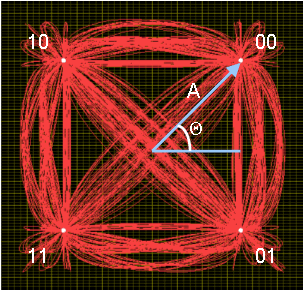QAM. Most likely you think it’s either an unpronounceable random set of letters or an Australian airline. In both cases you would be wrong. It stands for Quadrature Amplitude Modulation. That’s a fancy way of saying that unlike AM or FM which have one waveform, QAM has two and that makes it much more efficient. It means that HD channels can fit into much smaller spaces.
QAM is used by cablesystems and also by DIRECTV in their COM1000 system. There’s a dirty little secret to QAM, though… it’s not all the same. A single QAM channel carries 38.8 megabits of information, but that full amount is never used for just one channel. If it was, you could carry Blu-ray-quality video and audio over cable, but then you would probably get maybe 20 channels.
Cable companies will try to fit as many as 8 HD channels on one QAM channel. That means the quality is generally worse than Netflix or Vudu quality. They do it through techniques like bitstarving and gamut compression that strip quality out of the signal while still letting the cable company call it “HD.” The more channels they want to have, the more channels they shove into a single QAM.
On the other hand, DIRECTV’s COM1000 system puts only two HD channels on one QAM, which gives each channel the same quality that regular DIRECTV boxes put out. This means clearer sharper images and none of the shenanigans that the cable companies use. It’s a little more expensive to do it that way but the results speak for themselves.





